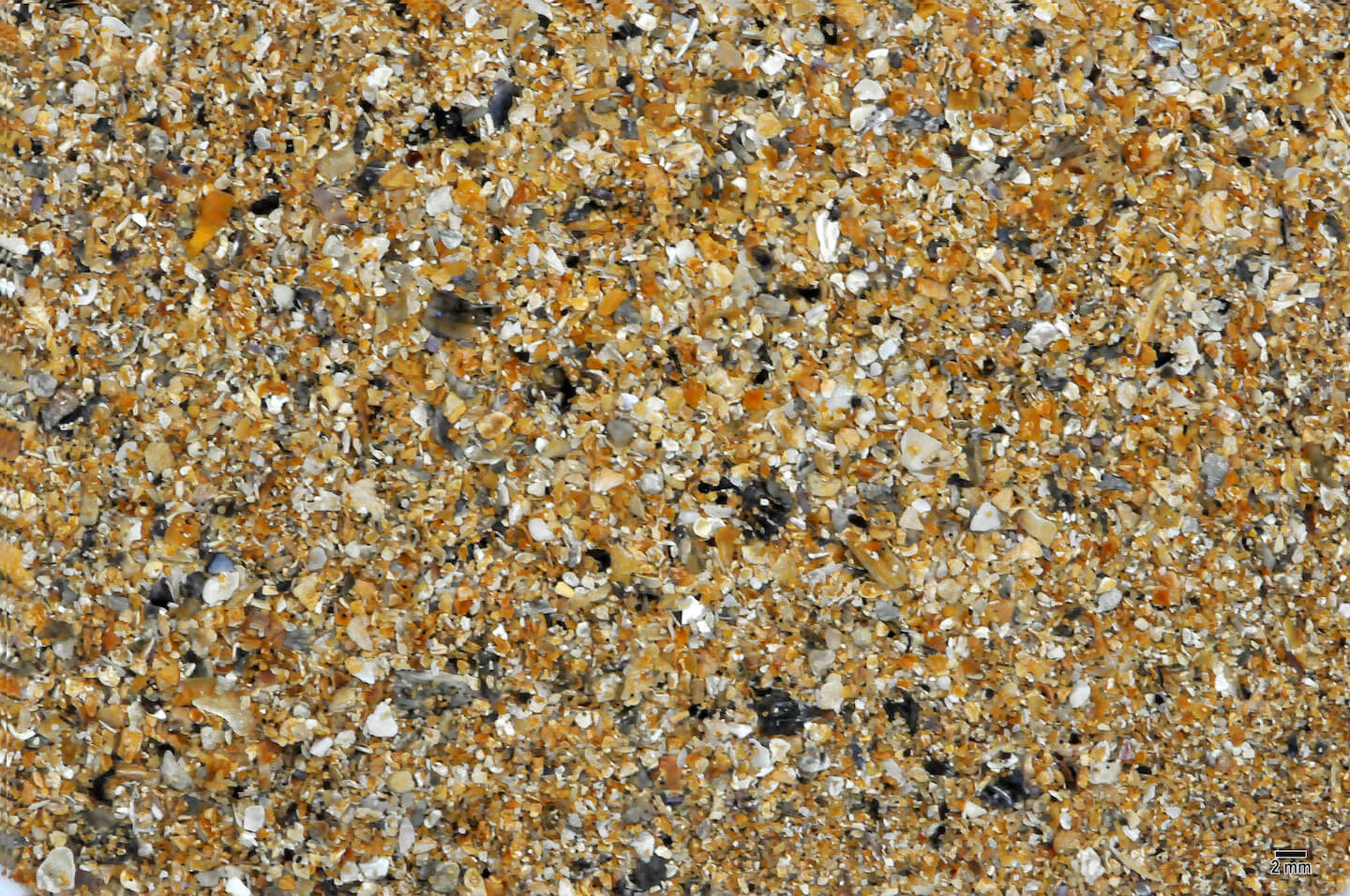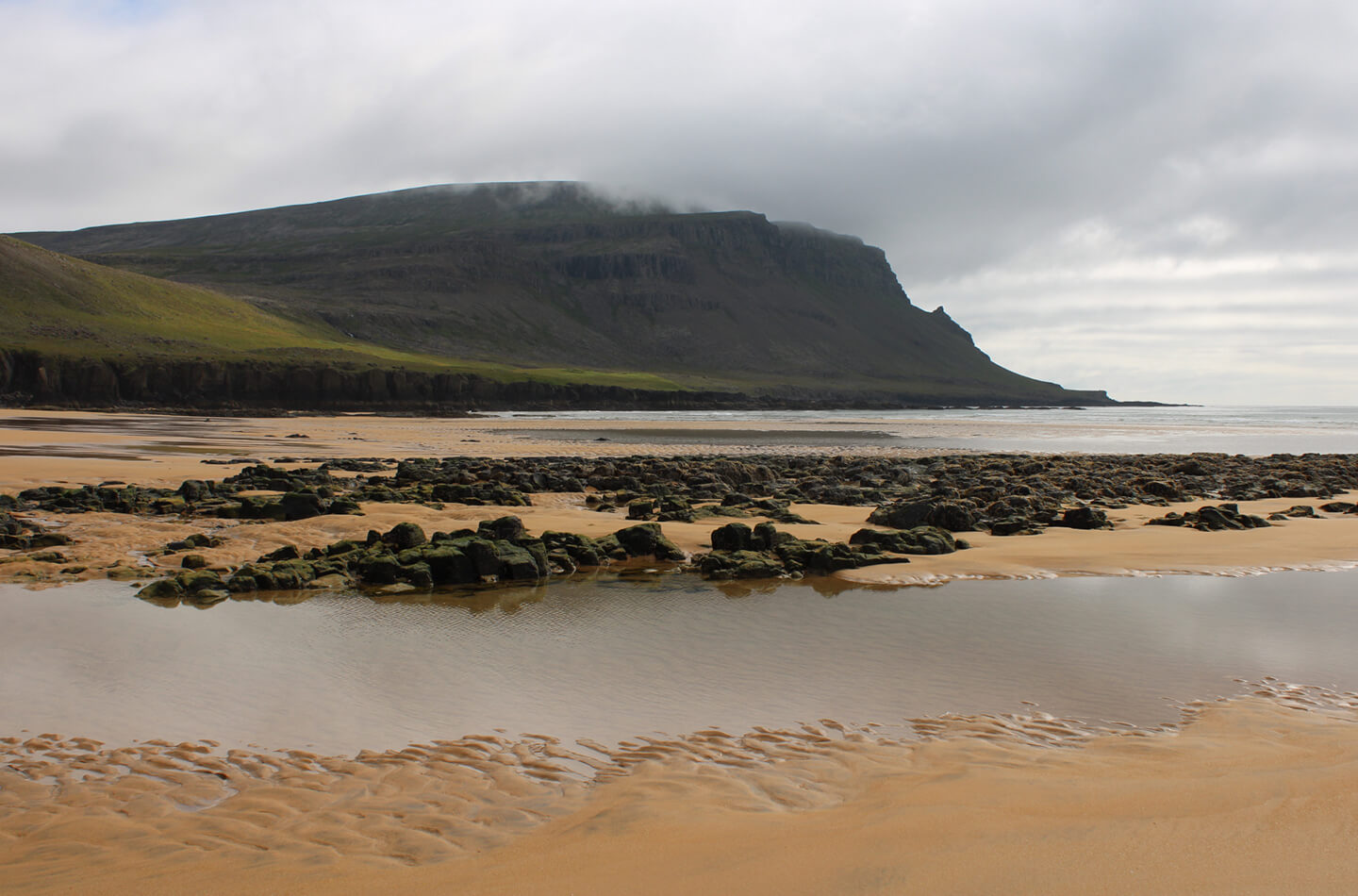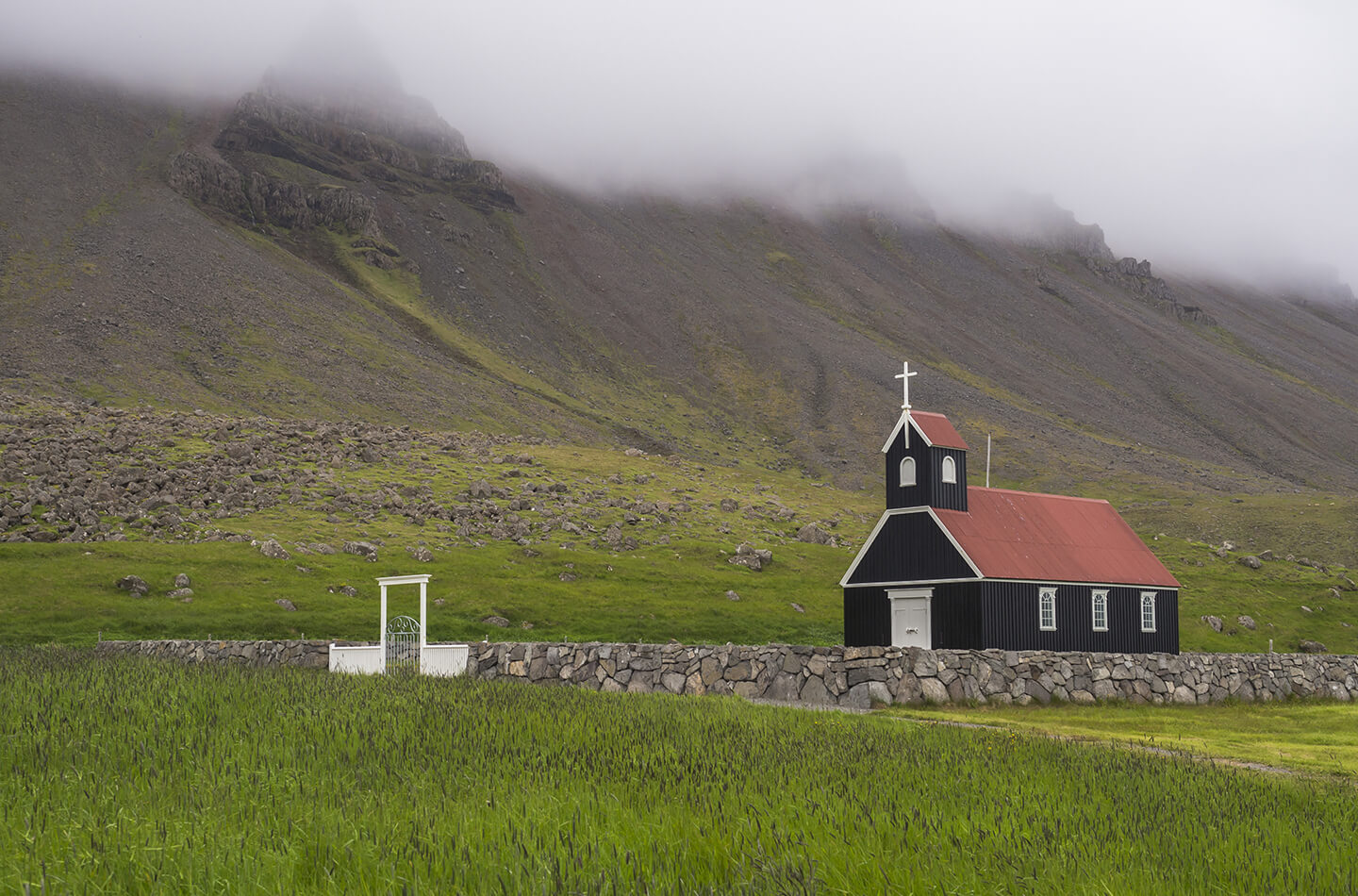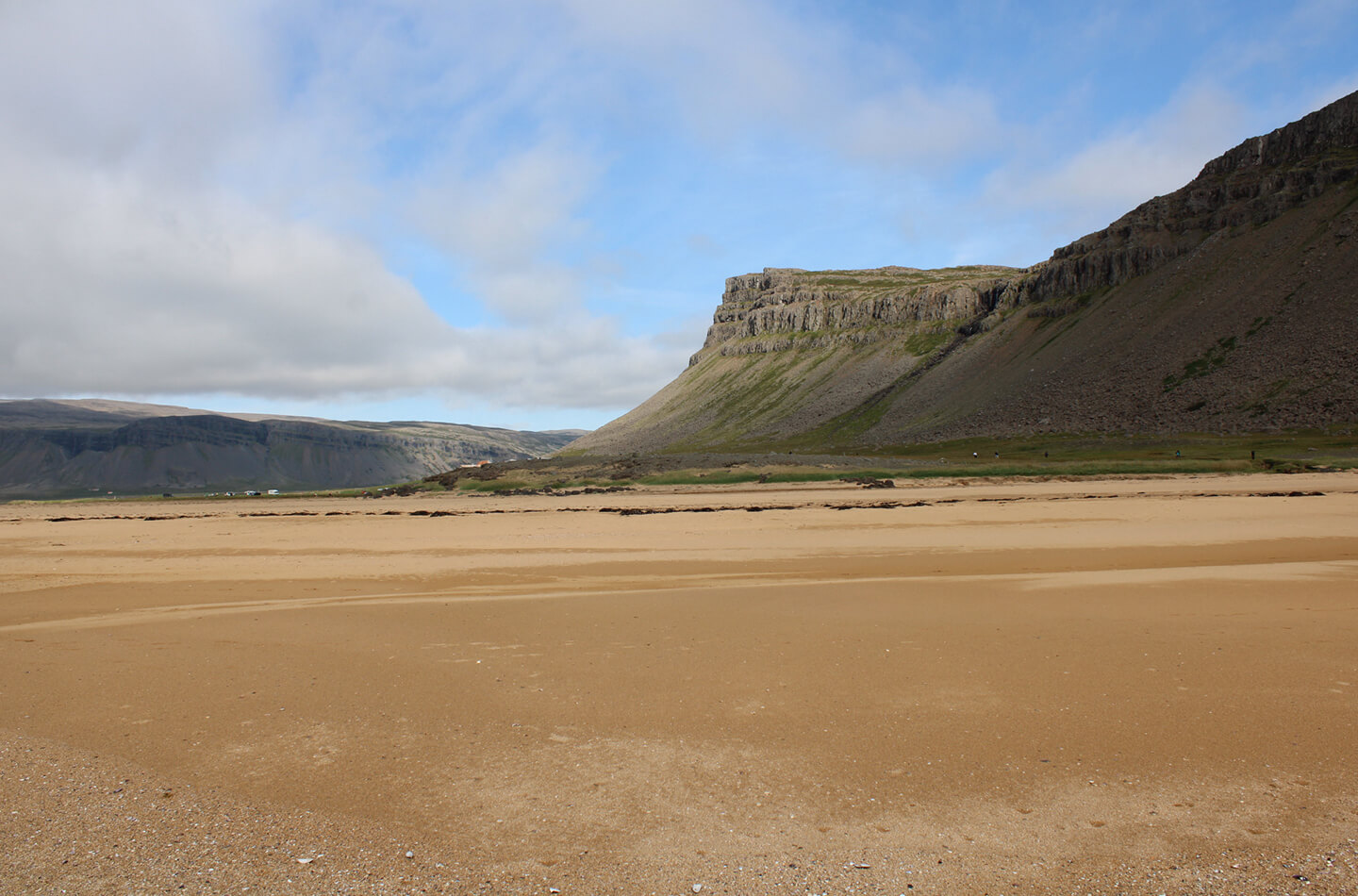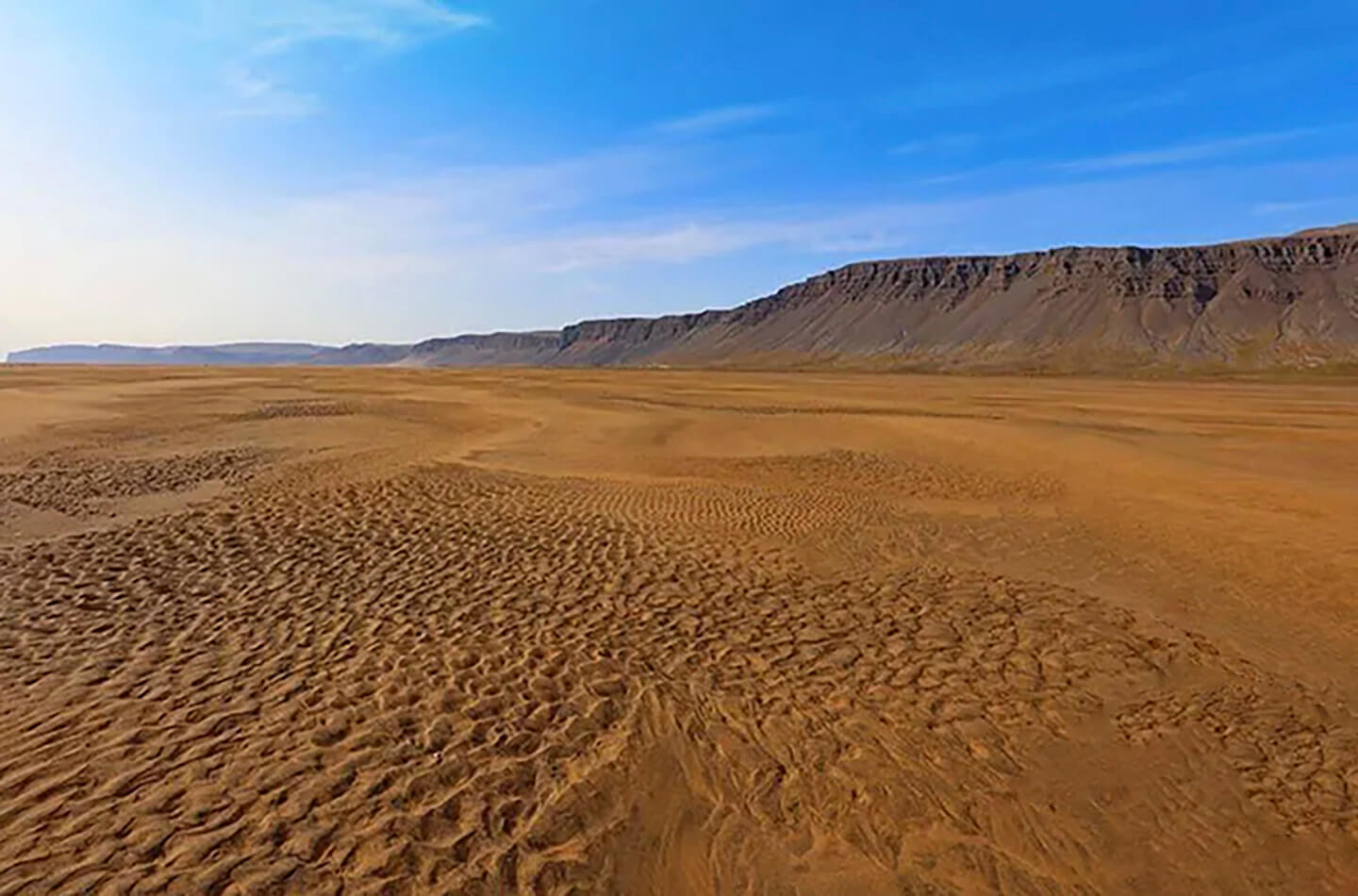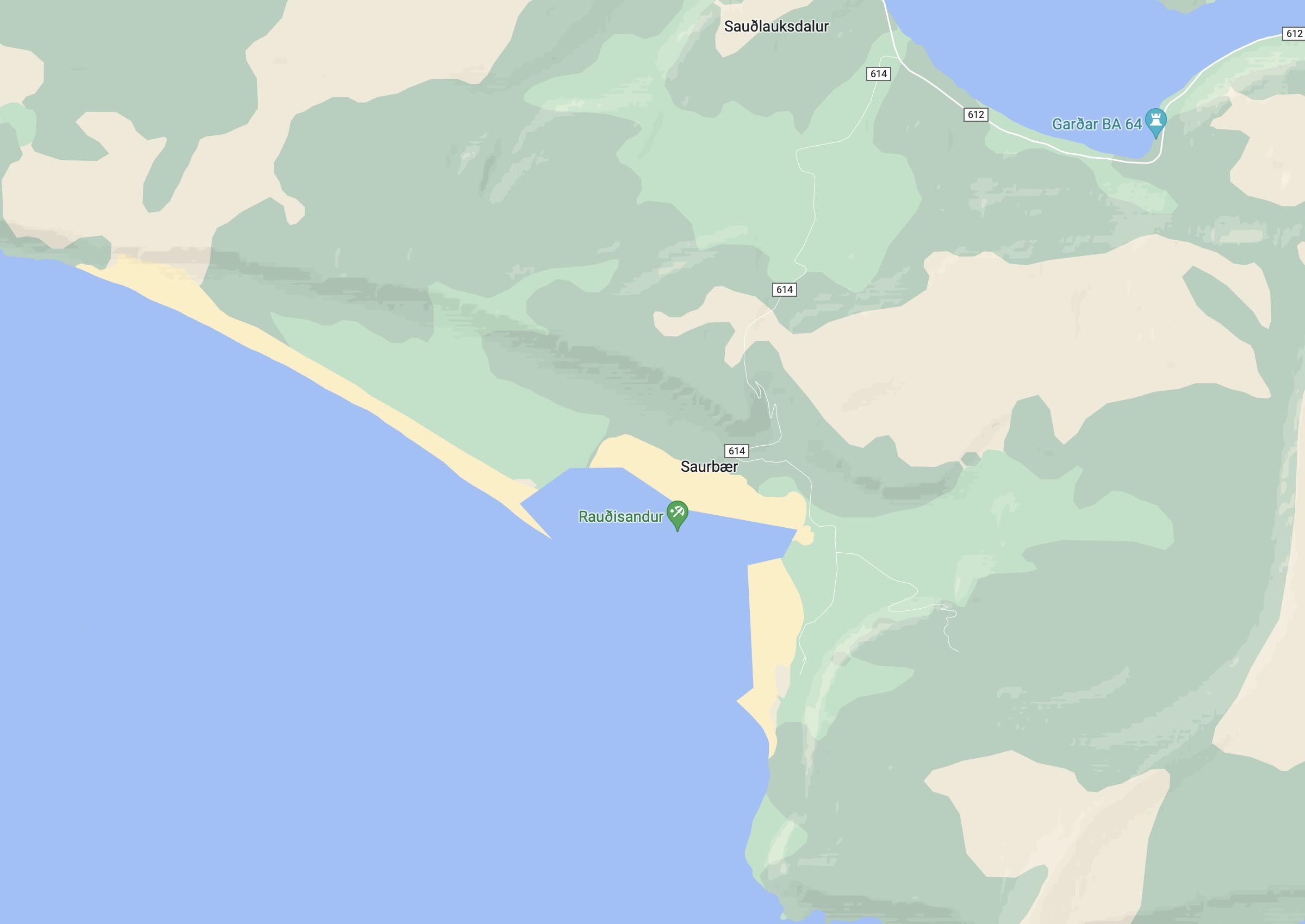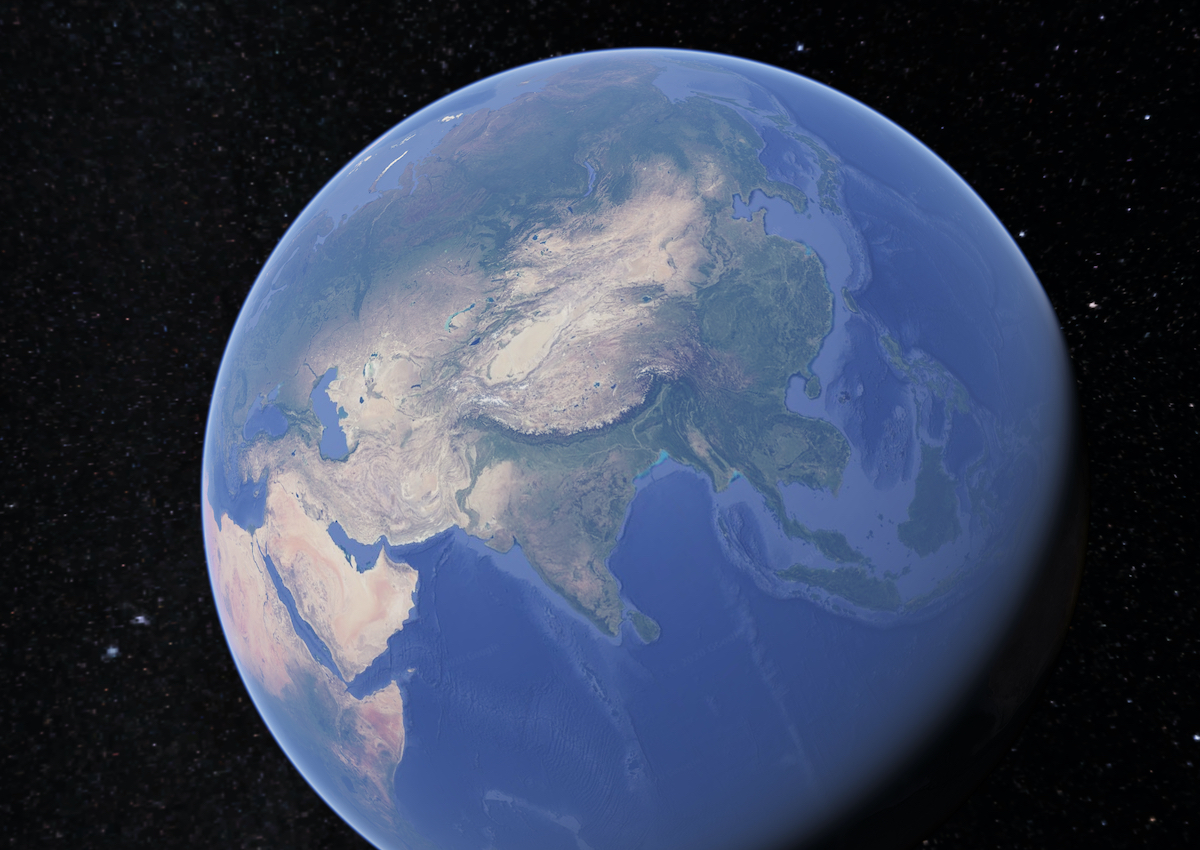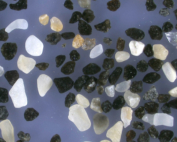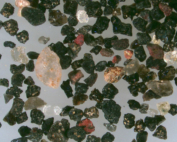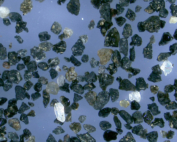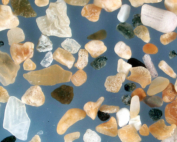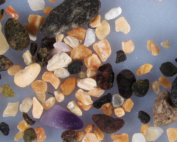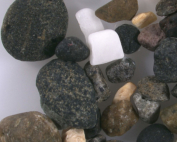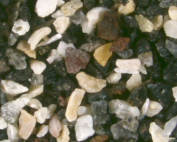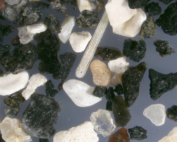Geographic Overview
A remote oasis of serenity and tranquility located in the remote Westfjords region, Rauðasandsvegur beach is a 10 km long stretch of reddish sand that displays different shades from pink to peach to brownish red depending on the direction of the light. This sand consists of remains of scallop and other shell fragments that have accumulated over dozens of years. The unusual sand color compared to other beaches in Iceland reflects a long history of volcanic inactivity. The water here is cold and not ideal for swimming. The adjacent cliffs are home to millions of seabirds. The nearest village is 20 km away.
Sand Gallery
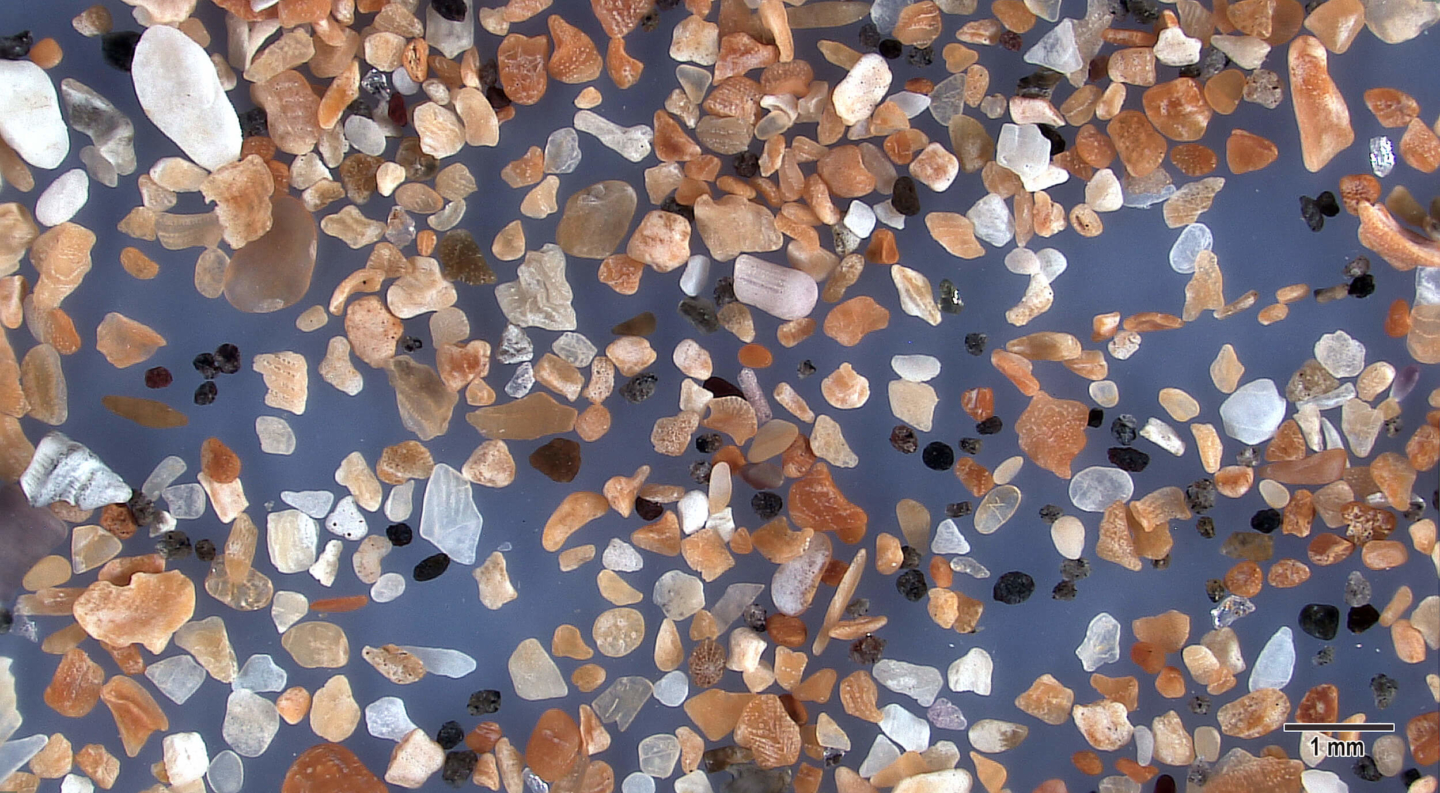
This lower magnification shows the spectrum of light tan to darker reddish tan shell fragments that give the beach sand its reddish-brown color. The majority of these shell fragments have rounded edges reflecting years of smoothing by wave action.
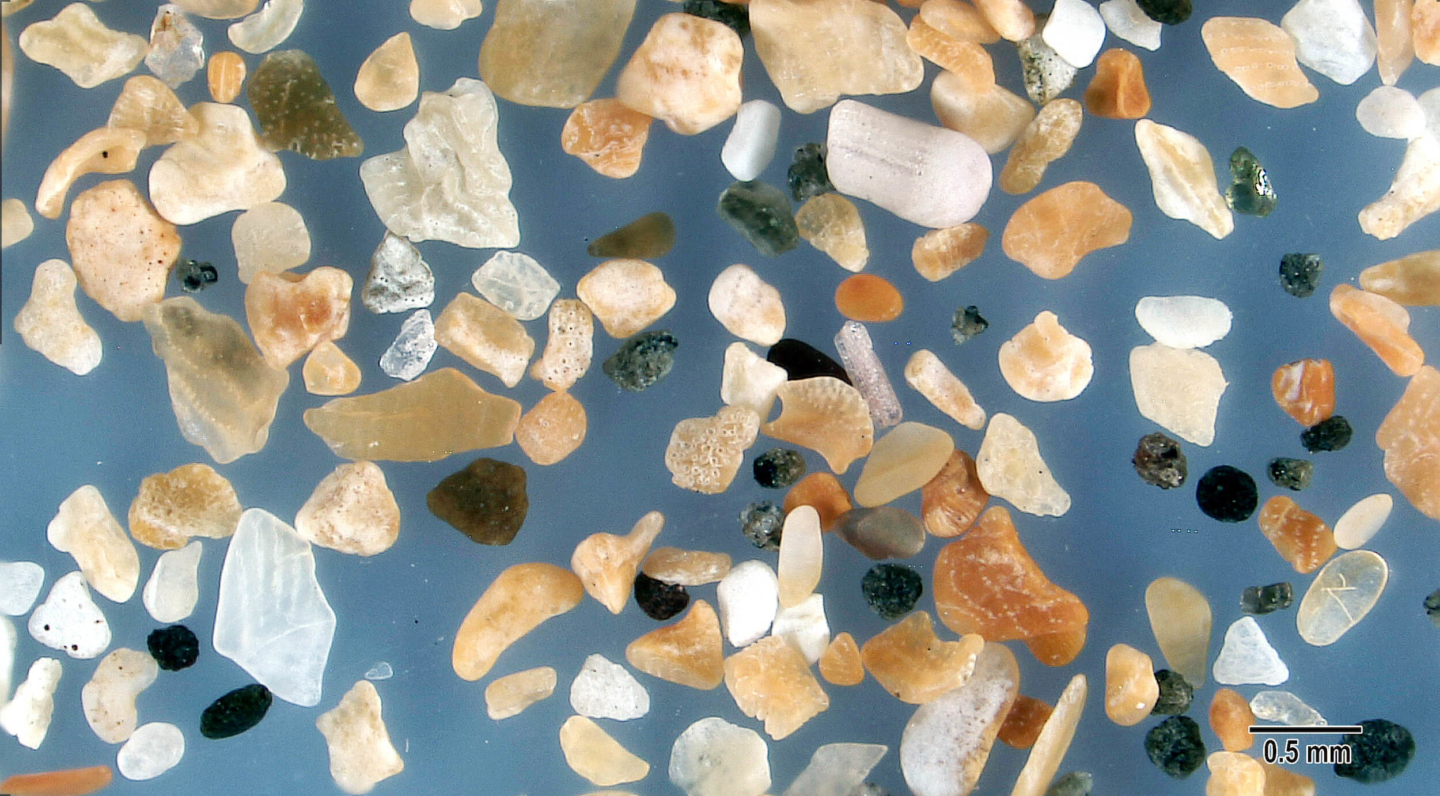
This higher magnification of beach sand consists of a variety of broken shell fragments including translucent, white, tan, and brown sand grains with occasional small fragments of mottled gray and black remnants of an ancient volcanic activity. A larger white fragment with faint linear grooves in the upper center of the image is a fragment of a sea urchin spine that has been worn smooth by wave action.
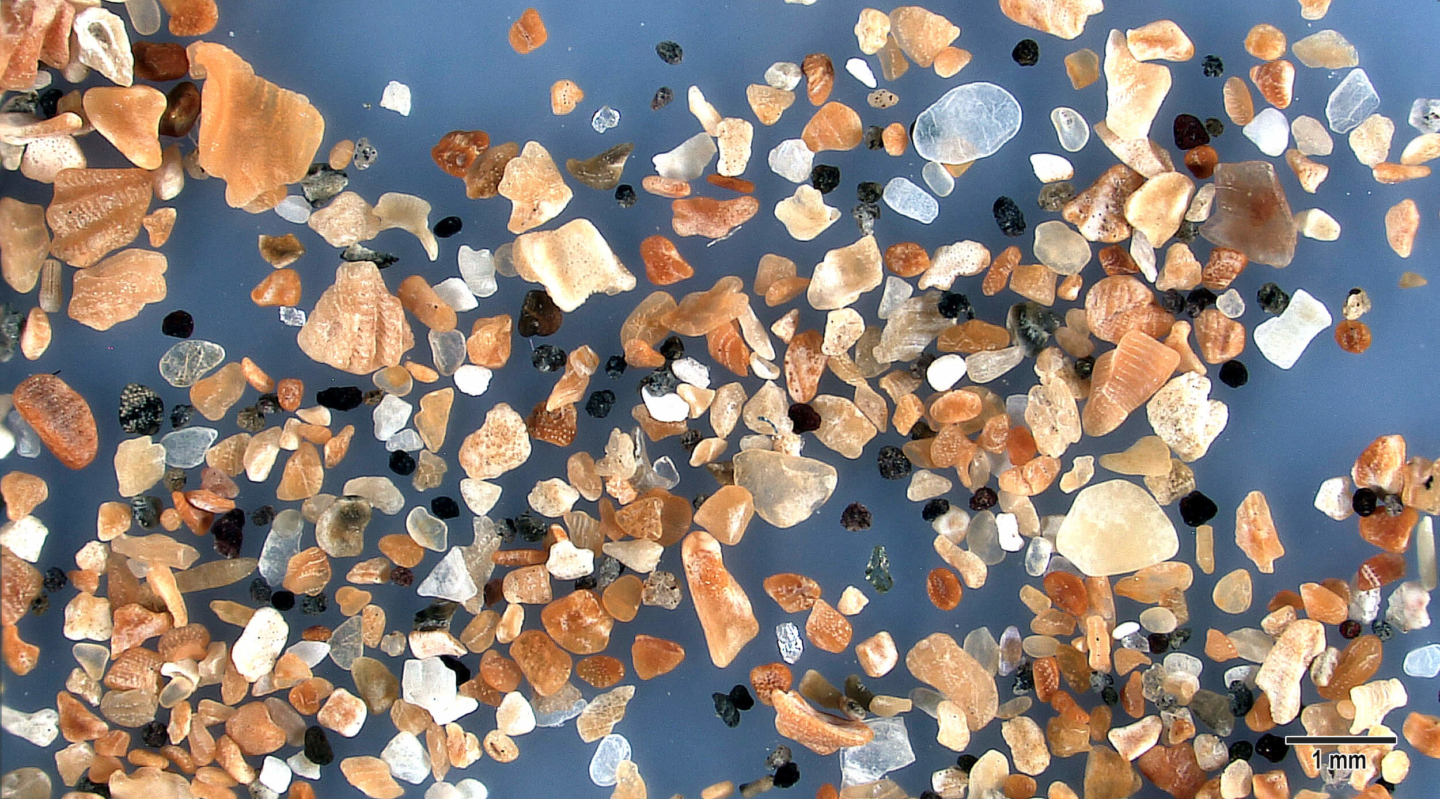
Aside from relatively few tiny black sand grains, this sample includes a mixture of larger and smaller mollusk shell grains. Most grains are light tan to darker reddish tan providing the rationale for naming this the Red Sands Beach.
